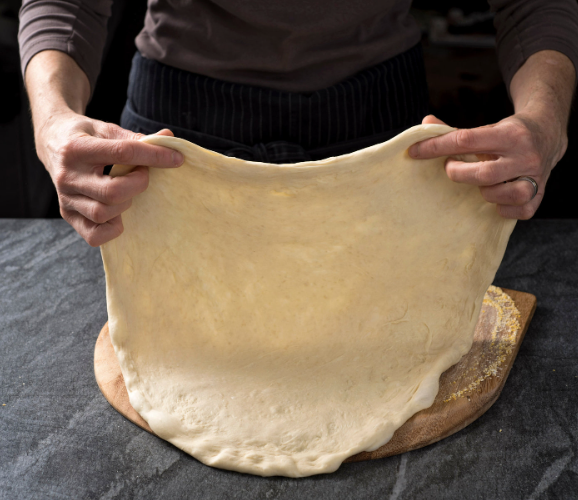The Dirty on Gluten
A gluten-free diet is often a good strategy and part of a therapeutic diet I recommend when helping clients understand and reverse disease dynamics. I thought I’d share WHY I recommend it and give some strategies to help you give it a try!
First, Let’s cover some basics: What is Gluten?
Gluten is a protein found in wheat, barley and rye that helps provide structure to it. It’s what allows bread dough to be stretchy. It has been around for millennia, but newer hybridized forms of wheat are relatively new to humans. Gluten has been shown to interact with the intestinal lining and promote excess permeability, aka ‘Leaky Gut’.
Picture the lining of your intestines as a long ‘screen door’. 
As over 2/3 of your immune system is in the GI tract, all of a sudden, more ‘foreign’ stuff (say, undigested food particles) is getting through and setting off inflammatory fires. This is one of the reasons I recommend avoiding gluten when you are dealing with any chronic, inflammatory dynamic. It can help to lessen the inflammatory burden! To learn more about Gluten and it’s impact on health, Check this article out!
How do I know if I may be sensitive to Gluten?
You can actually do very sensitive lab tests in order to get a better idea if gluten is causing inflammatory fires in you, but they are quite expensive. A better option is to do an elimination trial (Remove gluten) for 4-6 weeks and keep track of your symptoms. Not just your digestive symptoms (constipation, acid reflux, etc), but your achy joints, skin rash, mood and more. All of these can be impacted by gluten-sensitive clients. After removing gluten for the time period (100%), re-introduce it by having a full slice of bread twice a day for three days in a row. Then eliminate again and watch for any symptoms to arise. I have seen some remarkable sensitivities in clients upon reintroduction. This is a good way to take control of your health; by owning up to your symptoms and doing something proactive about it.
So I only have to avoid Breads?
Unfortunately, gluten is found in many packaged foods and ones you may not think of. Some of these gluten containing foods to be aware of include Soy Sauce, many pre-packaged deli meats, Cereals, and some granola bars to name a few. Fortunately, there are many gluten-free options to choose from as well. The goal, of course, is to move to eating more whole natural foods, vs finding gluten-free donuts 🙂
If I’m sensitive to gluten, does that mean I have celiac disease?
No, Celiac disease is an actual autoimmune attack, set off by consuming gluten and attacking the microvilli on the intestines. This can severely impact nutrient absorption and can lead to many body-wide symptoms.
The beauty of trying a gluten free diet is that there is no “side effect”. There aren’t many drugs or supplements that can say that! A gluten-free trial can start empowering you to take charge of your health. Give it a try–What’s stopping you?
Gluten-free strategies:
Now, if you’re going to try this, I want to provide you with some strategies to help implement a gluten-free lifestyle. A note, when you first begin, you will see gluten in everything you try to eat!
Some ideas:
- Substitute corn tortillas for flour when making tacos and enchiladas
- Turn your favorite meal into a salad–eg. Chicken fajita salad
- Tamari is a great gluten-free soy sauce alternative. Use in the same amounts as regular soy sauce
- Stir fry’s are your friend
- When ordering pizza, look for a cauliflower crust option–tastes like a thin crust pizza
- Tinkyada brand gluten free pasta is the best brand I’ve found so far, the spaghetti noodles taste the same as other noodles
- Asian and Mexican recipes tend to fare well in the gluten free arena
Start slow and give yourself some grace, For example, start with no gluten at breakfast. It may sound daunting, but the only way to ‘eat an elephant’ is One Bite at a Time 🙂








